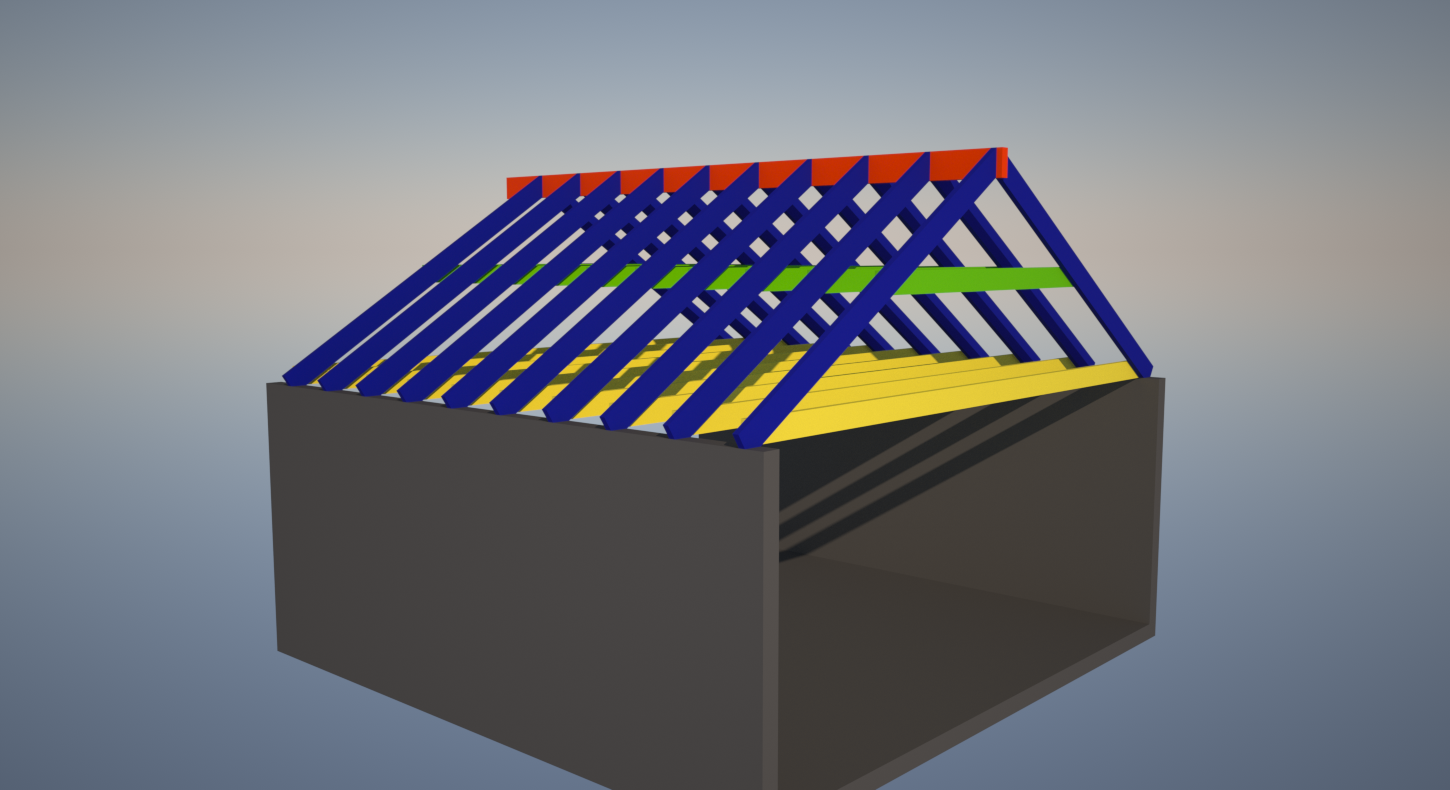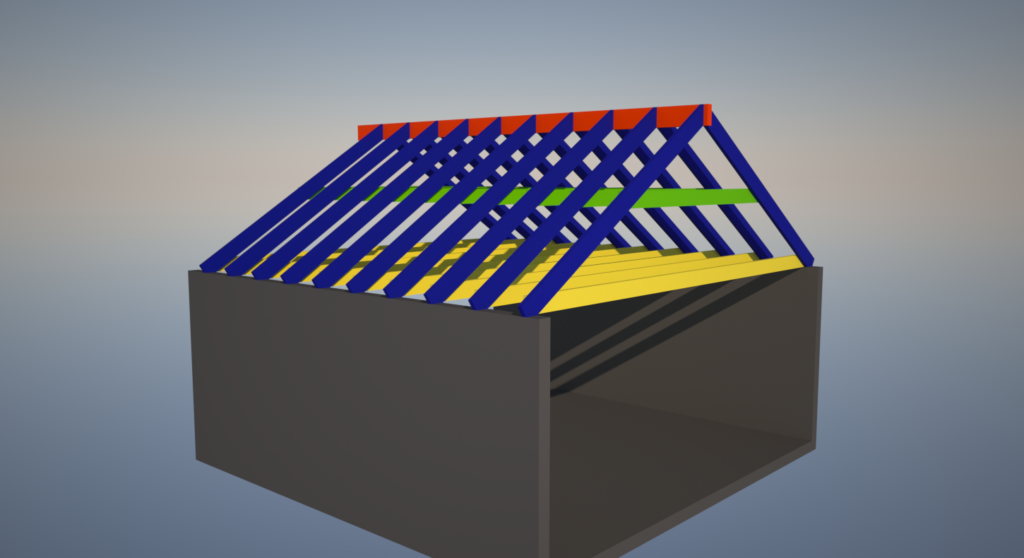Collar Ties
One of the hardest things to design on a house is the roof. It can be complicated. It’s almost always three dimensional. There can structural pieces running side to side, up and down, or on some weird diagonal. We don’t usually recommend people worry too hard about the structure of their roof. However, there is one concept that is deceptively simple and also very easy to get wrong. That concept are collar ties.
Parts of a Roof
Before we get into details, we thought we’d define some terms when it comes to roof structure. Working from the top down, the orange beam is known as the ridge beam. The purple pieces are rafters that run from the ridge beam to the walls. This are the pieces that support the roof sheathing and shingles directly. Then the ceiling joists are the yellow pieces while the collar ties are rendered in green. Most of the time, if the ceiling joists run the same direction as the rafters, you wouldn’t need to install both collar ties and ceiling joists for reasons we’ll discuss below.
Why Collar Ties?
How does a roof work? Generally, it takes the downwards loads on the roof and pushes it to the walls below. Because they are slopped, they actually end up putting a thrust onto the walls. This means, as weight builds up on the roof, the roof pushes the walls outwards. This thrust has to be resisted or your walls could collapse. If you have ceiling joists, they’re a very efficient method of resisting this force. But, if you want to vault the ceiling, you have two options. The ridge beams has to be upgraded to physically carry the load of the roof or collar ties have to be installed.
If the ridge beam is upgraded, this supports the rafter, keeping it from sagging and therefore removing the thrust from the equation. This has advantages in that it gives you the most height, but it has a major downside if there’s no where to provide structural supports in the space below. This means that ridge beams can get extremely large and deep very quickly, which can be costly to provide or install.
A cheaper solution can be collar ties. You will need a lot more of them and they will have lower than the ultimate height, but this can be a good thing. They will be much smaller, easier to buy and install. They also are easier to drywall and can give you a chase for mechanical systems.
What Isn’t a Collar Tie
There is some confusion over what a collar tie is and what it can do. Some of this is because for a long time, it was just a rule of thumb. You may still hear these, it just has to be halfway or at the third point of the rafter. Unfortunately, this is actually inaccurate and a collar tie that is installed incorrectly can cause problems.
Because the point of this piece is to provide a counterthrust, it will pull on the rafters back together. Now, imagine trying to open a door by pushing up against the hinge. It takes a lot more force to move the door. This same leverage concept applies to a collar tie. The higher from the wall plate it is, the more force it takes to hold everything in place. The height and size and connection between the ties and the rafters are a delicate balance to keep from overstressing any part of this system. We’ve seen collar ties installed too high or with too many nails failing causing problems or even damage to the roof or walls.
When you’re considering changing up your ceiling heights, these are things to keep in mind. Always defer to the design professional’s expertise as to the details, but hopefully you’ve picked up a few terms and concepts that will help you ask good questions and understand the answers you may get.

